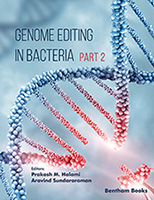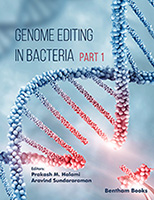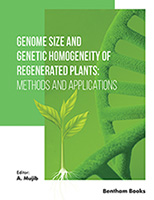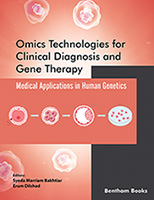Molecular methodologies have been routinely applied in Biological Anthropology to increase our understanding of human diversity and to elucidate the associations within and between human populations, as well as our evolutionary relationships with nonhuman primates. Since the first molecular studies, which date back to the late 1960s, molecular methodologies have been rapidly applied to investigations in the area of Biological Anthropology. The development of the Human Genome Project, concluded in 2004, resulted in the availability of a complete human reference sequence; combined with very important advances in sequencing and bioinformatics technologies, this leads the way to other genome-scale projects.
In Chapter 1 Santos and co-authors present a general characterization of the main genome projects with potential impact in the field of Biological Anthropology, providing examples of questions to which genomic data can now successfully be called upon.
The emergence of genomics has contributed to the availability of databases containing large amounts of information, leading also to the implementation of new mathematical/bioinformatics methods, which have undergone a major expansion in recent years. The analysis of both nuclear and mitochondrial human genomes received new tools of analysis, providing information that now needs to be conciliated with previous classic genetic evidences. Discrepancies between the results obtained with the use of such methodological innovations and the most established methodologies thus constitute a challenge, which anthropologists need to resolve. The transition from traditional approaches to massively parallel sequencing or next-generation sequencing of the mitochondrial DNA (mtDNA) is discussed in Chapter 2, by Marques and collaborators; these authors highlight the need for the development and validation of new routine procedures and optimization of laboratorial protocols.
The expanding amount of data has made it possible to address several important questions in a molecular evolutionary context. In Chapter 3 Ramos and co-workers analyse the contribution of germinal versus somatic heteroplasmy, discussing in its impact in aging and health.
Besides mtDNA, genomics have also been impacting the analysis of yet another monoparental system, the Y chromosome. Because a major goal of Biological Anthropology is to date events related with the present day populations (such as major migratory waves), mutation rate estimations for the Y chromosome are pertinent. In Chapter 4 Francalaci and collaborators address alternative methodologies which use genomic data to estimate such rates.
Information derived from genome projects, namely from the HapMap project is, as previously referred, having a tremendous impact in providing in-depth insights into the genetic makeup of human populations, namely of isolated populations, who are privileged populations for gene-finding studies of both monogenic and multifactorial diseases. In Chapter 5 the characteristics of genetically isolated populations are addressed by Lima and the potential impact of genomic data on gene finding efforts is discussed.
In Chapter 6 Fatjó-Vilas & Arias further address the imports of the genomic era into discoveries concerning the aetiology of multifactorial diseases, focusing on ecogenetics, an area which studies the relationship between genetic and environmental factors, looking for gene-environment interactions.
Ancient DNA has also entered the genomic era; an historical overview of the advances and constraints in the field of ancient DNA analysis is provided by Simon & Malgosa that also discuss, in Chapter 8, the pitfalls of ancient DNA analysis and the strategies to circumvent them. The advances achieved by paleogenetics are also acknowledged by these authors, in Chapter 9.
Human genomics has been impacting several areas, and Forensic Anthropology is no exception. In Chapter 10 the interrelation between Forensic Anthropology and Forensic Genetics is highlighted, arguing that recent genomic tools have the potential to efficiently resolve questions left unanswered by genetics. Genomic resolution is gradually occupying an important place in Biological Anthropology; the process has been relatively simple in several sub-areas of Anthropology, such as population genetics, whereas in other sub-areas, such as Forensic Anthropology, several issues need to be overcome before a routine application of genomic data can be considered.
Initially tailored towards research of human health and disease, genomics has already provided important attention to human origins and variation studies; yet, and although paleogenomics has been dramatically impacting anthropology, genomics as an anthropological subject is still in childhood, and more work has yet to be done.
Manuela Lima
Department of Biology, University of the Azores
Ponta Delgada, Portugal
Amanda Ramos & Cristina Santos
Universitat Autònoma de Barcelona, Cerdanyola del Vallès
Barcelona, Spain





